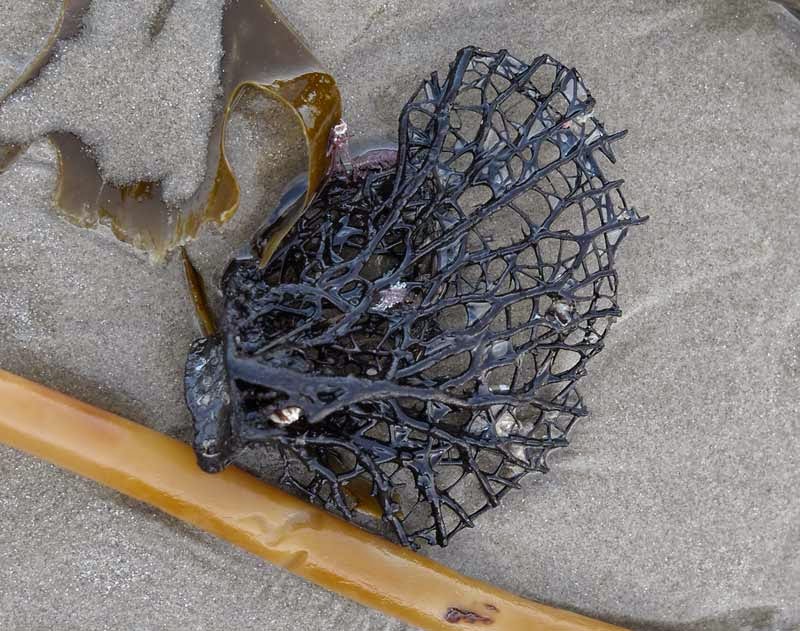

 |
| Coral |
At high tide and during storms sponges are dislodged from their garden communities and end up amongst rocks, seaweed and shells at the beach. If one is observant, these ancient multi cellular organisms (Porifera) can be found in a multitude of colours and structures. They cling to the floor of the ocean and allow nutrient-containing water to circulate through their pores and channels.
"Like all temperate life forms in the waters of southern Australia the habitat forming invertebrates in sponge gardens rely on clean water and sufficient nutrients and food particles to survive. Because many of the animals are permanently attached to the rock and unable to move around, they cannot go in search of food or flee from harm." (source)
They emerged 700 million years ago, when the oceans contained little oxygen. “The effects we predict suggest that the first animals, far from being a passive response to rising atmospheric oxygen, were the active agents that oxygenated the ocean around 600 million years ago....They created a world in which more complex animals could evolve, including our very distant ancestors.” (source)
http://www.marinespecies.org/porifera/
The WPD, the World Database of all Recent sponges ever described, is part of the World Register of Marine Species (WoRMS), a global initiative to arrive at a register of all marine organisms
http://www.nerpmarine.edu.au/
NERP Marine Biodiversity Hub
https://peerj.com/articles/901/
PeerJ: "Indirect effects of overfishing on Caribbean reefs: sponges overgrow reef-building corals"













No comments:
Post a Comment